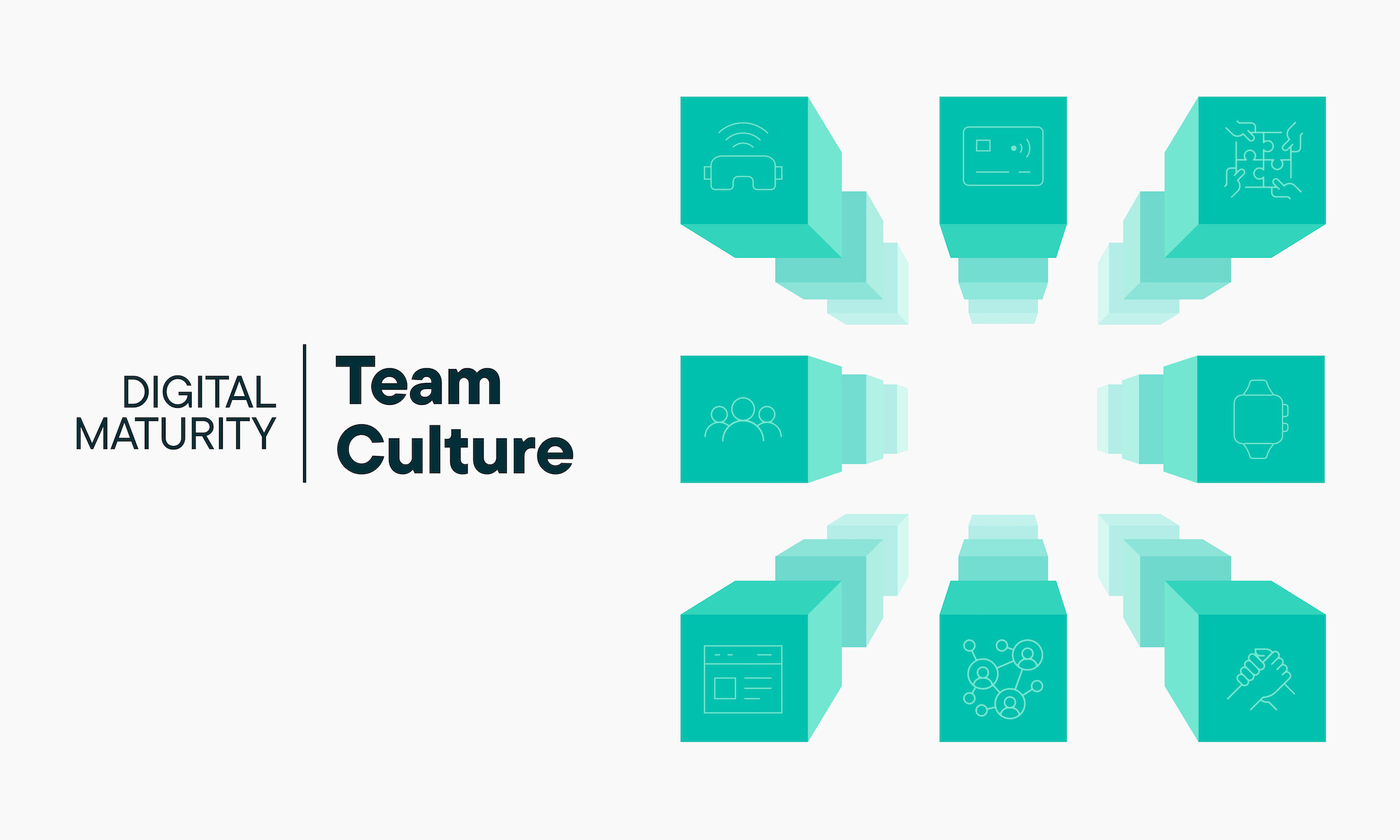
Digital maturity is much more than just having the right technology. For B2B organizations, in particular, investing in leadership, digital skills and mindset is a crucial step toward achieving true digital maturity. The Digital Maturity Assessment by Master B2B and commercetools provides a comprehensive evaluation of the Team Culture dimension, alongside Digital Tools, Customer Experience and Data & Insights.
In the second installment of our series, we’ll explore the key aspects of the Team Culture dimension and what it means for your business.

There’s no denying that technology is at the heart of digital maturity. However, as many B2B organizations can attest, plugging and playing a new platform isn’t enough. While various factors contribute to digital success, one often overlooked element is the impact of Team Culture.
This dimension covers a broad spectrum of aspects, evaluating how well a company cultivates internal digital skills and talent. It assesses digital-specific leadership, organizational design that includes specialized digital roles and the agility of development processes. Together, these factors paint a clear picture of how employees and leadership are truly embracing digital. In fact, you could argue that investing in Team Culture is the very first step in a digital transformation journey. For many enterprises, it is indeed the case.
Assessing the Team Culture dimension requires not only looking at the level of maturity of your tech teams but also the mindset of your leaders and the organization as a whole. Both factors contribute to determining which stage of maturity you’re in. To begin your assessment, consider these five questions:
How much is my company focusing on embracing digital from an organizational perspective?
How much hiring have we done for digital roles?
How well have our sales teams adapted to the shift to digital?
Is our development process more waterfall- or agile-based?
Does our organizational design include employees with specialized digital roles?
By answering these questions, you can gain a clearer understanding of your organization’s digital maturity within the Team Culture dimension and take the next steps toward meaningful transformation.
Measuring digital maturity with a focus on team culture
The digital maturity assessment provides a scale of 1 to 4 (1 being the lowest and 4 the highest rating) so you can measure where your organization stands.
For instance, B2B organizations in Stage 1 are at the very beginning of their digital journey. They either don’t offer eCommerce at all or have a very basic site setup with limited capabilities, which usually translates into minimal — if any — investment in digital skills, personnel and leadership. In these organizations, fear often holds back digital initiatives. Many leaders prefer to rely on the status quo of handshake deals rather than investing in projects they don’t fully understand. What many fail to recognize is that, in fact, eCommerce and in-person sales are meant to coexist — not replace one another.
Moving from Stage 1 to Stage 2 can start small and gain momentum over time. Usually, there’s at least one person advocating for change — someone who believes in the power of digital.
This individual becomes the catalyst, evangelizing even small successes and sharing feedback from customers and prospects asking for more digital support. These efforts can help win over leadership and inspire action. Today, B2B practitioners increasingly recognize the importance, and investment is becoming the norm. In fact, recent research by Master B2B and commercetools shows that 94% of digital leaders overwhelmingly agree that their CEOs are supportive of digital transformation efforts.
Businesses in Stage 2 have gained some traction. Leadership acknowledges the value of digital transformation and is willing to invest in the tools and skillset. At this point, it’s critical to assess whether there is internal expertise to drive the initiative. Since many B2B firms lack experienced eCommerce professionals, most organizations must recruit talent from outside.
The cultural impact of bringing in new digital talent may be significant, but often, it’s exactly what the business needs to shift its mindset. This transformation fosters a culture that sees technology as an enabler, values agility and innovation and embraces the future with optimism. This shift is particularly crucial within the sales team. As the direct connection to customers, they must embrace digital channels and learn to coexist with them. To facilitate this, salespeople should continue earning commissions for online orders and receive recognition for adopting digital tools — encouraging a hybrid sales approach.
Once a B2B company has reached Stage 3, the business is recognizing the benefits of digital, giving leaders confidence to stay on course. Team culture has evolved from complacent to aspirational, and there’s a sense of energy and excitement for what’s next. At this point, the goal is to help everyone feel they are contributing to the success of the organization’s digital initiatives.
To achieve this, you must create initiatives that foster cross-functional collaboration and innovation. Teams should have multiple communication channels and access to leadership, ensuring alignment and continuous progress.
You know you’ve reached Stage 4 — full digital maturity — when you’re operating on flexible, versatile and scalable tech architecture that’s integrated with all critical systems of record and are recognizing tangible results. At this stage, digital and non-digital efforts work together to drive revenue growth. Since employees were involved in the digital transformation journey, they have a sense of ownership and actively support digital investments. Innovation becomes ingrained in company culture, with teams eager to explore advanced technologies like AI and given the time and resources to do so.
While Stage 4 marks full digital maturity, it’s important to continue nurturing the culture you’ve built to keep it thriving. With a system that values a test-and-learn mindset — where failures are analyzed, successes are celebrated and lessons are shared — your people become just as valuable to your organization as your digital technology.
To get a clear picture of where your B2B is now and what needs to happen to move your business forward, download the full report, Establishing your Baseline: Assessing B2B Digital Maturity.